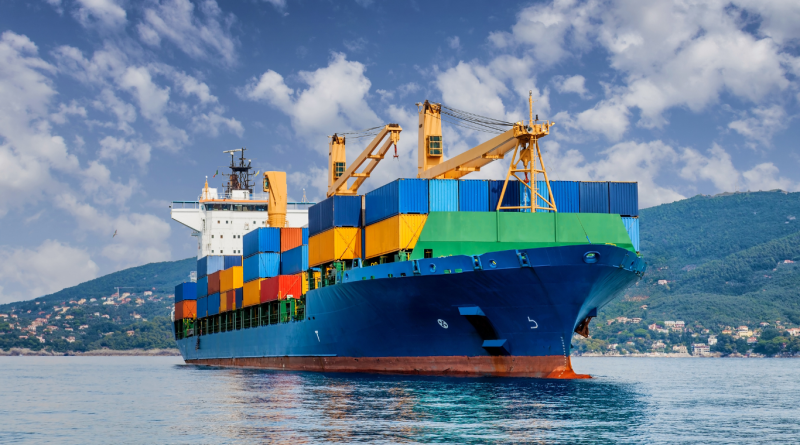The global shipping industry, traditionally seen as conservative in adopting technology, is experiencing a revolution in logistics. As e-commerce expands, environmental regulations become stricter, and supply chain resilience becomes a top priority, innovation has become indispensable. The convergence of digital technology, automation, and green energy is creating a smarter, cleaner, and more connected maritime sector.
Here are 6 advanced technological innovations driving the transformation of the shipping industry, shaping how goods are transported across oceans and continents:
Autonomous cargo ships and AI navigation
Autonomous cargo ships are moving from concept to commercial reality. These ships are equipped with artificial intelligence-powered navigation systems, enabling real-time decision-making based on sensor data, satellite imagery, and machine learning algorithms. Some ships can operate with minimal crew or even remotely.
This technology minimizes human error and accident rates, reduces crew-related operating costs, and optimizes fuel consumption through real-time route planning. In addition, AI supports predictive maintenance, helping ships identify and address technical issues before they cause delays or hazards. As more ports and maritime authorities adapt to this technology, the autonomous ship sector is expected to grow significantly within the next 5 years.
 |
AI-navigated autonomous cargo ships will be put into practice to reduce accidents and operating costs. Photo: TLI Magazine |
AI-navigated autonomous cargo ships will be put into practice to reduce accidents and operating costs. Photo: TLI Magazine
Harnessing wind power and aiming for sustainable transport
With the entire industry moving towards decarbonization, maritime transport is returning to wind power but in a more modern way. Technologies such as hard sails, kite systems, and rotor sails are offering environmentally friendly propulsion solutions.
For instance, Oceanbird's hard sail design can reduce emissions by up to 90%; Airseas' kite system saves fuel by harnessing high-altitude winds; and Norsepower's rotor sails have been installed on several large cargo ships. These initiatives not only reduce reliance on fossil fuels but also align with the International Maritime Organization's (IMO) 2030 carbon emission reduction targets. Hybrid engine and wind power systems also give ships greater flexibility in operating under different weather conditions.
5G connectivity and smart port infrastructure
More and more seaports are adopting 5G networks to support the development of next-generation smart infrastructure. High-speed, low-latency connectivity allows for seamless information transfer between ships, port authorities, and cargo handlers.
5G networks enable upgrades to infrastructure such as automated cranes, remote equipment control, live video monitoring, and real-time cargo flow updates. The integration of 5G with autonomous ships and smart logistics centers will shorten cargo handling times, enhance security, and improve responsiveness to disruptions. Pioneering ports like Freeport of Riga (Latvia) and Rotterdam (Netherlands) have invested heavily in 5G-based smart infrastructure.
Cargo tracking with IoT and RFID
Real-time cargo tracking is no longer a convenience but a mandatory standard in the global logistics industry. Thanks to IoT sensors and RFID tags, shipping companies can monitor the condition, journey, and security of goods from departure to delivery.
These technologies provide continuous data on temperature, humidity, impact, and location of goods, while also facilitating faster customs clearance through transparent shipping history. Proactive monitoring also significantly reduces cargo loss and damage. When combined with blockchain-based supply chains, this system further enhances transparency and trust among parties in the global transport network.
Electric and hybrid ships
Electric-powered ships are gradually becoming a trend as the maritime industry aims for zero emissions. While deployment on long sea routes still faces challenges, coastal and inland routes are witnessing a boom in electric and hybrid ships.
Some notable advancements include: fully electric container ships have started operating in northern Europe; hybrid systems combining LNG or biofuel engines with electric motors; and shore-based power supply solutions for ships at berth, reducing emissions in ports. These are key technologies for realizing the zero-emission transport corridors proposed in Europe and Asia.
Drone applications in maritime logistics
Drones are improving last-mile delivery capabilities at sea, increasing the speed and flexibility of maritime logistics. This is a particularly effective solution for high-value or urgent shipments where traditional port calls are too slow or expensive.
Drones are used to deliver spare parts or documents to anchored vessels, transport emergency medical supplies to remote areas, or inspect maritime infrastructure. This solution not only shortens cargo transit times but also reduces environmental impact, especially in congested or geographically complex areas. Many large ports and logistics companies have incorporated drone delivery into their daily operations.
The global shipping industry today is not just about giant container ships but also a symbol of a smart, green, and highly adaptable logistics ecosystem. The combination of AI, renewable energy, wireless connectivity, and automation is contributing to building a maritime industry ready for the 21st century. Investing in advanced technologies not only improves operational efficiency but also helps the entire industry meet increasing environmental and regulatory expectations.
Hai My (TLI Magazine)












